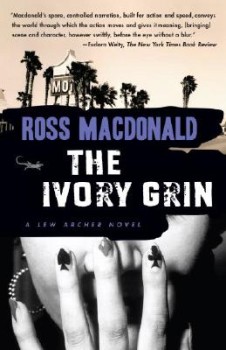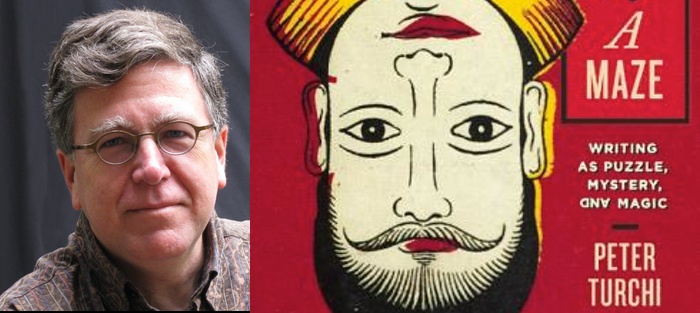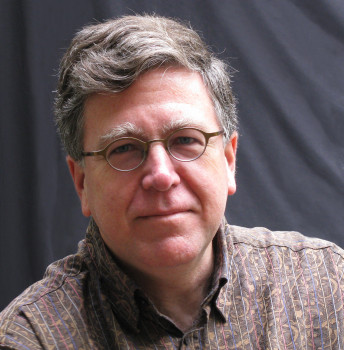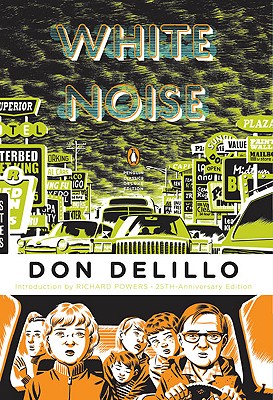Pete Turchi and I met in graduate school at the University of Arizona. We had the good luck to be in a fiction workshop led by Francine Prose, and we discovered that we had a lot in common: we both loved lousy baseball teams (well, Pete’s team won the World Series that year, but went on to embarrass themselves for decades), and we suffered cheerfully through long seasons with the same combination of pluck and denial. We both had girlfriends who were smarter and better looking than we were, and we pondered the enigma of their apparent interest in us. We both had been raised by good-hearted parents who had climbed from meager beginnings to the lowest rungs of the middle class and who were worried and baffled by our belief that we might escape the 8-to-5 schlep by investing in language and narrative.We both loved literature with a particularly desperate dedication, wishing to write novels that would express the beautiful, terrible wonder of the human treadmill. We both drank beer.
We’ve been friends now for more than thirty years. Over the decades, we’ve done a number of things together: hiked deserts and mountains, navigated foreign traffic in tiny rental cars, snorkeled in salt water, played any number of sports (most of them badly), waited tables at Bread Loaf, swum with dolphins, and interviewed at a freezing Chicago MLA in clothing as flimsy as a pun. Each has read virtually every word the other has written, which means we have offered criticism and suggested revisions for three decades without damaging our friendship. One rainy, hilarious weekend in a mountain shack in Colorado, Pete, Antonya Nelson, and I did almost nothing but dream up book titles, including a few that have since found their way to dust jackets and several that cannot under any circumstances be repeated. At the moment that I’m writing this introduction, our sons (who have known each other all their lives) are playing in a blues band on a tour of the Midwest.
 Over those decades Pete also found the time to write a number of marvelous books, including Maps of the Imaginations: The Writer as Cartographer, one of the most celebrated books on writing of the past quarter century. His new book, A Muse and A Maze (Trinity University Press), is also about the craft and art of writing fiction, but it takes a new tack, examining the process of writing through the lens of puzzles and puzzle-making.
Over those decades Pete also found the time to write a number of marvelous books, including Maps of the Imaginations: The Writer as Cartographer, one of the most celebrated books on writing of the past quarter century. His new book, A Muse and A Maze (Trinity University Press), is also about the craft and art of writing fiction, but it takes a new tack, examining the process of writing through the lens of puzzles and puzzle-making.
Picture a study lined with bookcases burgeoning with leather-bound volumes, the two of us nestled in leather chairs the color of sunrise, a slow moving ceiling fan spinning softly above our heads, chilled mugs of golden ale in our hands. (We actually did the interview by email, but I’m trying to be atmospheric.) Picture us ungrizzled, if you will, young and handsome. After all, friends of long standing always see the other in the light of their first acquaintance.
Editor’s Note: Read “The Pleasures of Difficulty” from A Muse and a Maze on the Tin House blog.
Interview:
Robert Boswell: The central premise of your new book is that it may be surprisingly useful for writers to consider the relationship between puzzles and fiction. You elaborate and limit this argument in a number of fascinating ways, and you’re careful to point out differences (a work of fiction cannot be solved, for example). It’s a brilliant work, and I’ve already referred to it with students and friends many times, particularly what you have to say about constraints in puzzles and their application to fiction.
Peter Turchi: For years I told myself I should write a lecture on “The Strategic Release of Information” in fiction, from plot to scene, from paragraph to sentence to phrase to individual words. The selection, withholding, and arrangement of information defines a piece of writing—though that isn’t to say every writer focuses on it. Some writers make those decisions intuitively, based on practice. I never took the time to write that lecture, so I wrote this book instead.
I’m constantly thinking about what boundaries I’ve adopted unconsciously, and whether those are serving the work. I enjoyed some of the constraints of journalism (deadlines, column inches), math was my favorite subject in school, and I’ve always been attracted to constraint-based writing: formal poetry, some of the work by members of the Oulipo (Italo Calvino, Georges Perec). Some of the best writing I’ve seen by students, especially students early in their development, has been in response to very specific assignments. So one of my goals was to explore the seemingly perverse pleasure to be had from constraints, or form. The joke of Calvinball in the Calvin and Hobbes comic was that a game with no rules is exhausting. Puzzles, like sports and games, interest us (or some of us) because they have rules.
You enlarge your argument by asking the reader to consider constraints in visual art. You make specific use of Charles Ritchie’s haunting prints, and you advance the argument by noting his obsessive attention to detail. Do you think successful writers tend to be (need to be) obsessive?
I met Charlie at MacDowell—as I recall, he traded me some Lucinda Williams tunes for some Bruce Springsteen—and was struck not just by his attention to detail but by his obsessive (it seemed to me) focus and process, years spent observing and making images of the same yards and trees, daily sketches, months if not years spent working on an individual copper plate that, when finished, could be used to make no more than 30 prints. That devotion served as a reminder of the importance of being deeply immersed in the work. A lot of the student writers I work with seem more interested in getting something published. That’s not exactly a surprise: when I was younger, I was the same way. There’s always a voice in your head ready to say, “This is good enough,” or “Maybe no one will notice the shortcomings that I see here.” Ultimately you have to decide if your goal is to produce as many rough versions of poems or stories as possible or to produce the best work you can.
Writers, no matter their age or experience, sometimes get anxious if anyone says they’re repeating themselves in any way. But a lot of great artists return to the same subjects, images, narrative stances, you name it, again and again. This summer I saw the Degas/Cassatt exhibit at the National Gallery, where among other things you can see them teaching each other to make prints. Degas collected and kept multiple versions of the same image—“The Visitor,” I think it is—of Cassatt’s, an image she was trying to print to her satisfaction. They were deeply engaged in process.
So in talking about the virtues of obsession I’m really talking about the virtues of sustained concentration, of patience. As Michael Martone says, everything is immediately publishable: post it on Facebook, or a blog. It’s published. His point: publication alone doesn’t mean anything.
I find myself working endlessly with particular details and with the rhythm and sound of each sentence, but I’m also aware that I’m deeply interested in specific topics or personal events. Occasionally, I realize that some new topic has entered my pool of obsessive interests. For roughly a decade, I had an obsessive interest in hardboiled detective novels. That interest has largely passed; although, I just went back to Ross MacDonald’s The Ivory Grin (Knopf, 1952)—the third time that I’ve read it.
 I just re-read the Paris Review interview with Irwin Shaw, where he says, “I admire [Graham] Greene, but I disagree with him…to the extent of the value he places on a single obsession. Writers, especially if they live long enough, can be gripped by different obsessions, or at the same time by several obsessions.” Which reminds me of something Ross MacDonald wrote: “As we grow older the meanings of our obsessions gradually change, and mature as we mature. Some of the pain goes out of them and understanding enters, perhaps. So, we return to our obsessions and we reshape them. We reshape ourselves as we write.” I’m not arguing that every writer necessarily has or should have an obsession with certain material, only that we shouldn’t be scared off if we see that we’re returning to certain ideas, or types of character, or forms. There’s a value in continuing the exploration.
I just re-read the Paris Review interview with Irwin Shaw, where he says, “I admire [Graham] Greene, but I disagree with him…to the extent of the value he places on a single obsession. Writers, especially if they live long enough, can be gripped by different obsessions, or at the same time by several obsessions.” Which reminds me of something Ross MacDonald wrote: “As we grow older the meanings of our obsessions gradually change, and mature as we mature. Some of the pain goes out of them and understanding enters, perhaps. So, we return to our obsessions and we reshape them. We reshape ourselves as we write.” I’m not arguing that every writer necessarily has or should have an obsession with certain material, only that we shouldn’t be scared off if we see that we’re returning to certain ideas, or types of character, or forms. There’s a value in continuing the exploration.
Obsessive practice is a matter of process. Some writers revise deeply dozens of times, others revise less but produce more. More than anyone I know, you teach the virtues of revision, including, importantly, the practice of revising with a focus on just one aspect of the work, and doing a particular revision even though it may not carry the work forward, toward completion, so much as help the writer understand it differently. Would you call that obsession? Or just discipline?
I’d call it discipline, but an impartial observer might call it obsessive, or simply crazy. Maybe I’m obsessed with discipline. Most successful writers I know obsess over their work, particularly over their sentences. I recently had the experience of providing comments to a person who was not in the habit of revising, and while she thanked me for my attention to detail, she confessed to a mutual friend that my comments made no sense to her. She wanted to know why the needless repetition of words seemed (to me) inelegant. It is, after all, the way people talk. If she’d asked me, I would have tried to talk about sound—and I’d have confused her even more, no doubt.
I want to change direction for a moment. I love the analysis of the hardboiled mystery you provide in A Muse and A Maze, and I’m particularly impressed that you show how the best novels of the genre use the appeal of puzzles but resist the hard closure of a puzzle. And you include Ross MacDonald (his name keeps coming up), whose Lew Archer mysteries, you and I seem to agree, are among the best of the genre, on par with Chandler and Hammett. I know this is straying from the book’s topic, but could you talk about how you see that working in the best mysteries, how they have it both ways?
Most of the novels we refer to as “mysteries” are actually prose puzzles: there’s a problem to solve, clues are pursued, the answer is revealed. A lot of people find them entertaining, but those “classical mysteries” drove Raymond Chandler nearly crazy—he wrote a wonderful essay arguing that they have virtually no relationship to life as we know it. He—and Hammett, and MacDonald—wanted to write books about crime that recognized “the authentic flavor of life as it is lived.” Their books still offer the pleasure of a certain degree of resolution, but they’re intent on reminding us that many things go unexplained. The result is something even more satisfying, if you’re the sort of reader who reads for something more than entertainment.
A few years ago someone published a book of Chekhov’s early stories, billed as ghost stories and mysteries. In many of them, you can see him being too clever, wrapping things up too neatly, nearly always at the expense of realistic complexity. His best-known stories still offer a sense of completion, but they demonstrate that the most serious problems don’t have easy answers.
All of this is interesting and useful to writers who aren’t writing crime stories because the genre books illustrate the pleasures of a well-constructed plot and a completed shape, which are not inconsiderable. Dickens, Austen, and Graham Greene, among many other literary writers, owe at least some of their success to the fact that they understood how to compose a puzzle, even though their interests went far beyond plot. I just finished Colum McCann’s Let the Great World Spin (Random House, 2009), which is defined by a web of interconnecting characters and events. From one perspective, there’s no plot; there’s certainly no murder to be solved, or much of anything else that can be solved. On the other hand, McCann knows his readers will want to know what the novel’s many characters have in common, what makes this glimpse into these very different lives a novel. That question draws us forward, and the answer was good enough to win him the National Book Award.
 Speaking of great books: I got to see an early draft of Tumbledown (Graywolf, 2013), which was significantly different from the finished novel in many ways. You do something unusual at the end—I won’t give it away here—and I only realized when I heard you read the first chapter aloud that in making certain kinds of transitions between sections, you were subtly preparing the reader for what you were going to do a few hundred pages later. I’m betting you weren’t thinking of that as a puzzle, but it’s one example of the sort of attention to composition, with an eye toward the effect on the reader, that I’m thinking of when I talk about the writer as a puzzle composer. An alert reader senses that something unusual is going on; you notify us, put us on the lookout for other, related moves. And it ends up relating to one of the book’s themes, which is that the difference between psychiatric clients and their counselors (or between those of us deemed “normal” and those of us deemed “abnormal”) is less than we might like to think.
Speaking of great books: I got to see an early draft of Tumbledown (Graywolf, 2013), which was significantly different from the finished novel in many ways. You do something unusual at the end—I won’t give it away here—and I only realized when I heard you read the first chapter aloud that in making certain kinds of transitions between sections, you were subtly preparing the reader for what you were going to do a few hundred pages later. I’m betting you weren’t thinking of that as a puzzle, but it’s one example of the sort of attention to composition, with an eye toward the effect on the reader, that I’m thinking of when I talk about the writer as a puzzle composer. An alert reader senses that something unusual is going on; you notify us, put us on the lookout for other, related moves. And it ends up relating to one of the book’s themes, which is that the difference between psychiatric clients and their counselors (or between those of us deemed “normal” and those of us deemed “abnormal”) is less than we might like to think.
Yeah, that’s what I was attempting to do in the first chapter of the novel. Tumbledown presented me with particularly difficult challenges because of its odd ambition, but every novel has to teach the reader how it operates (or how it intends to operate, or how it will pretend to operate). In doing so, it provokes the reader’s participation—by making promises, by showing the reader that she has correctly anticipated the novel’s direction, by revealing that her projections are ultimately inadequate because the narrative eludes predictability in just the right way, and so on.
In Life A User’s Manual, Georges Perec [published originally in French in 1978 as La Vie mode d’emploi, and first translated into English in 1987 by David Bellos] says the maker of a jigsaw puzzle “undertakes to ask himself all of the questions the players will have to solve.” He says:
Puzzling is not a solitary game: every move the puzzler makes, the puzzle-maker has made before; every piece the puzzler picks up, and picks up again, and studies and strokes, every combination he tries, and tries a second time, every blunder and every insight, each hope and each discouragement have all been designed, calculated, and decided by the other.
He’s not talking about those mass-produced puzzles; he’s talking about individually made puzzles, which are something else entirely.
Thinking about such matters reminds me of the chapter in A Muse and A Maze called “The Myth of Linearity,” which examines the movement of characters through time over the course of a narrative, a movement that is (you argue) less straightforward than one may realize.
While narrative may involve events, and while events take place in time, and while time itself might seem to move in one direction at a constant speed (though that is rarely the way we experience it), there is nothing particularly linear about narrative—or, more accurately, the narrative line is no simple thing.
I suspect that most readers and perhaps even some writers have never considered the mysteries of narrative movement (particularly as it addresses form), and if they have, I would guess that they’d assert the opposite of your claim—that chronology creates an orderly progression the author merely needs to follow. I can’t ask you to reproduce the whole argument (the chapter ranges widely, from Freytag’s pyramid to Chutes and Ladders to Canterbury Tales to Italo Calvino), but I wonder if you could provide an introduction.
That chapter was inspired, unintentionally, by a poet who was arguing the virtues of the lyric. In the course of that argument, the poet said not just that narrative is defined by chronology, but that narrative is necessarily linear. That struck me as a significant untruth. And I don’t know how many times I’ve heard someone say they’re no longer interested in “linear fiction.” So I set out to discover what exactly this mythic linear fiction is. If by “linear” we mean a story or novel that moves forward predictably, in a straight line, without deviation, I’d argue that no good fiction is linear. I’ve got Aristotle on my side, so in that discussion I mention him, then untangle some misconceptions about Freytag’s pyramid. Along the way I look at a folktale and Alice Munro’s “Royal Beatings” to illustrate two very different ways stories are effectively shaped. The problem with endorsing Freytag’s pyramid or anything else as the necessary shape of a narrative is that the model limits possibilities. So in that chapter I offer a big bag of analogies, from Chutes and Ladders to a garden path, from a reindeer hunt to a labyrinth. All of them demonstrate the virtues of interruption and deviation from a straight line.
 I look forward to teaching A Muse and A Maze because it introduces such a wide range of writing issues and provides meaningful ways to approach and consider each. It’s not one of those introductory primers that (in most cases) merely repeat conventional wisdom but a book designed to expand the ways that writers approach their work. It’s not a craft book but a rumination on the impulse to write and how that impulse may be related to other human desires. At the same time, I suspect that the book has some very practical applications. For example, the chapter on constraints has permitted me to reconsider the weave of story cycles. Do you think there are other ways that the book may provide practical writing advice and stimulation?
I look forward to teaching A Muse and A Maze because it introduces such a wide range of writing issues and provides meaningful ways to approach and consider each. It’s not one of those introductory primers that (in most cases) merely repeat conventional wisdom but a book designed to expand the ways that writers approach their work. It’s not a craft book but a rumination on the impulse to write and how that impulse may be related to other human desires. At the same time, I suspect that the book has some very practical applications. For example, the chapter on constraints has permitted me to reconsider the weave of story cycles. Do you think there are other ways that the book may provide practical writing advice and stimulation?
One day, long ago, in the far-off land of Chicago, you and I were walking to a baseball game and talking about the importance of recognizing the irrational within the world of a story. People aren’t always logical, or consistent, and plenty of actions and events defy simple explanation. Chicago Cubs fans are a good example. Why torture yourself?
As I’ve talked to people about this book, it’s been clear that many writers do not want to think of themselves as puzzle composers—they don’t think of themselves as creating something meant to lead (and mislead) the reader in various ways. But I’m not arguing for purely rational fiction. What interests me is the balance great fiction strikes between the irrational and the unknown, or true mystery, and carefully considered composition. The muse and the maze. The chapter that helped me understand that, as I wrote it, is “Seven Clever Pieces,” which is about complex characterization in general, and more specifically how prominent characters can be revealed in depth and yet still seem elusive, or not wholly known—in a way that is not frustrating, but compelling. Jay Gatsby is the obvious example, and I discuss him and Nick Carraway, among others. We spend so much time and effort making characters interesting and believable that it’s tempting to ignore the fact that the people who most interest us in life are the ones who elude us in some way. If I’ve done my job, that chapter offers some very specific strategies as well as a variety of examples. My operative metaphor for character is the tangram—and if the reader doesn’t know what those are, or hasn’t thought about them for a while, there are tangram pieces to cut out on the last page of the book.
And did I mention there are puzzles to solve? This isn’t a textbook. My aim was to make it surprising, entertaining, and useful.
Note from Peter Turchi: Among the many puzzles and word games in A Muse and A Maze is one, an acrostic, for which no solution is provided. Readers who submit correct solutions will be eligible to win a custom wooden jigsaw made by Liberty Puzzles, among other prizes. For complete details click here.
Editor’s Note: Read “The Pleasures of Difficulty” from A Muse and a Maze on the Tin House blog.







